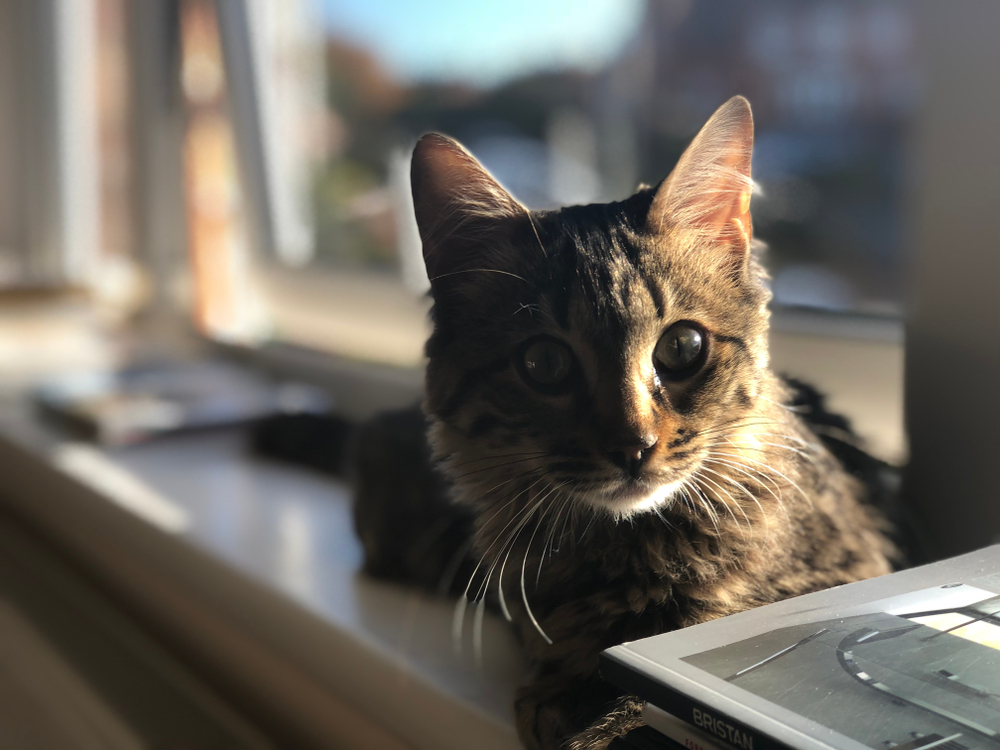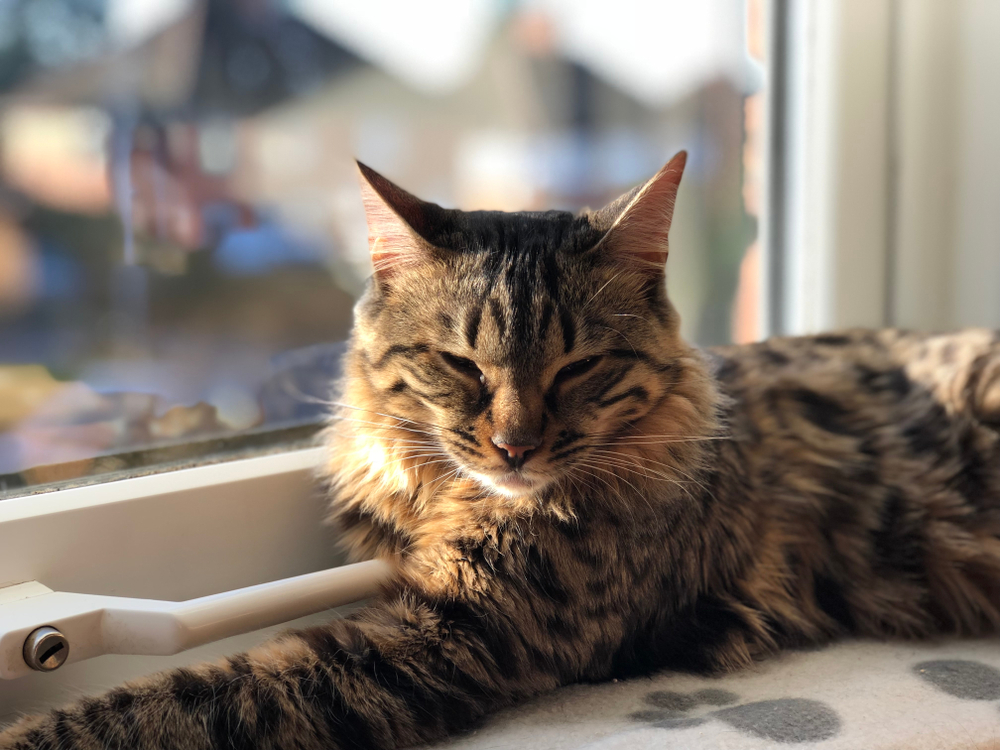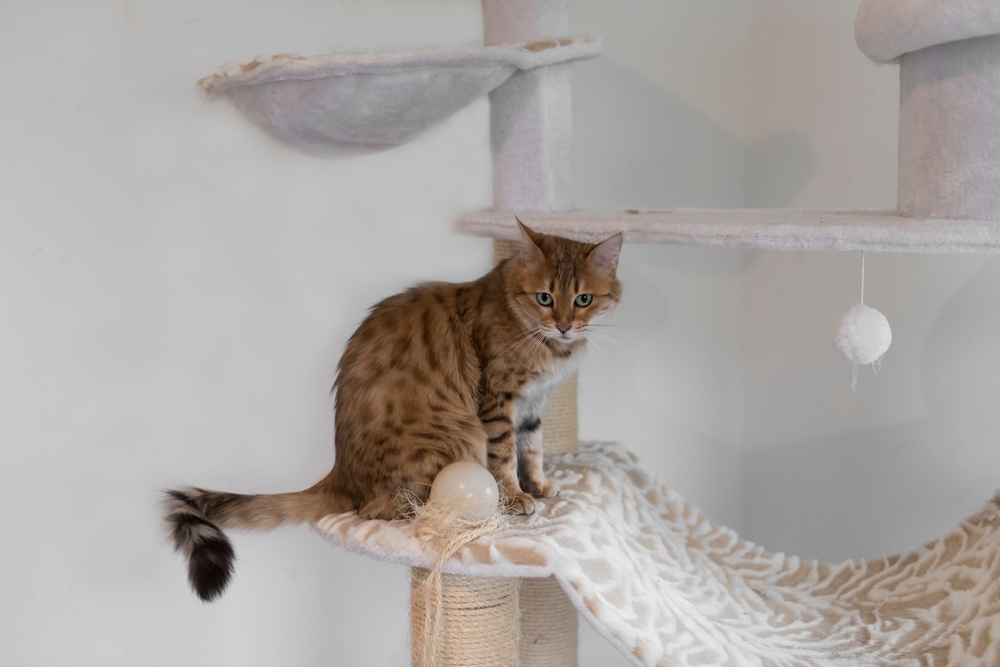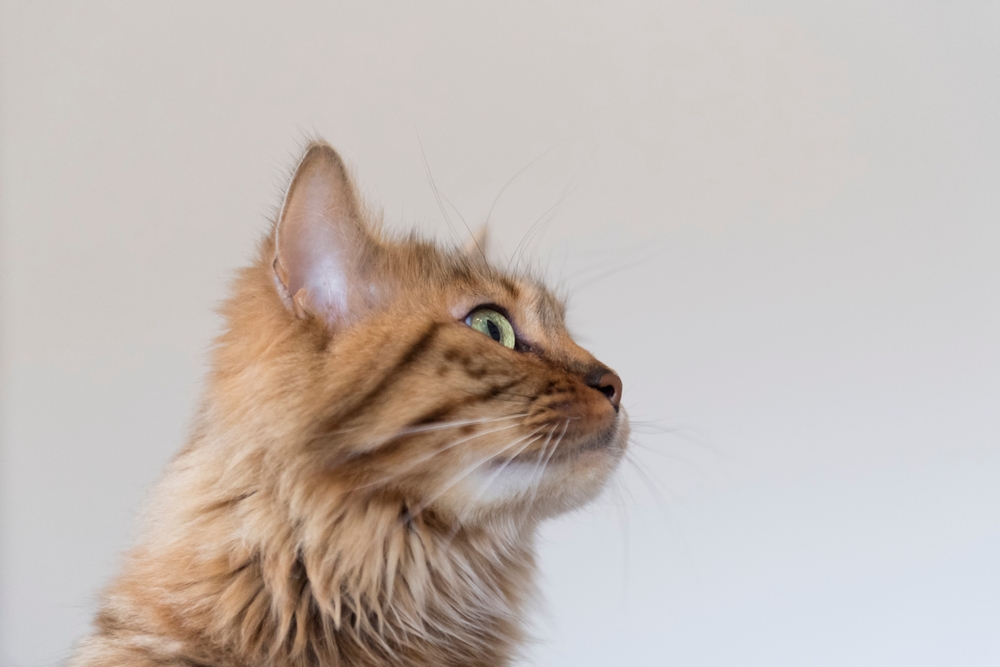As you were reading more about Bengal cats, you stumbled upon another breed. You’re not even sure if it’s a breed but this feline seems to be a sibling (or a cousin) of your favorite wild-looking kitty. What is a Cashmere Bengal cat? You’re actually confused as you never heard about it.
By looking at the pictures, you can already tell that this cat has a lot in common with a Bengal cat. But there’s one thing that’s different and it’s her fur. It looks longer, and you’re not entirely sure what happened there.
Is a Cashmere Bengal a cross between a Bengal and some other cat? Is she a subtype of a Bengal cat? Or is there something else going on?
We know your head is bursting with questions so hopefully, you’ll get all of your answers by the end of the article. Here’s a story about the mysterious Cashmere Bengal cat.
What’s a Cashmere Bengal cat?

To make things clear, this isn’t a completely different breed nor a cross between a Bengal and some other feline. It’s actually just a variation of a Bengal cat who has long hair. That sounds cool, right?
Another important fact is that Cashmere Bengal cats have been around for as much as your traditional Bengals. Breeders sometimes found these long-haired variations inside of the new litter, and some of them simply ignored these soft-coated kitties. Others, however, tried to breed more of them.
Just like that, Cashmere Bengal cats gained more popularity and honestly, we understand the hype completely. Bengal cats are already unique because of their background. Now imagine having a longhair version of a domesticated feline that looks like a leopard. That sounds so cool!
Therefore, longhair Bengals are a thing and certain organizations are working hard to make them a separate breed. So for now, they’re just a variation of your favorite wild-looking Bengal and honestly, we’re not mad about it.
Characteristics of Cashmere Bengal cats
Now that you’re familiar with the origin of Cashmere Bengal cats, there’s probably one more thing you’re interested in. Do these felines act the same way as the Bengals? Is there any difference in the way they look and behave and do they require more attention and care since we’re talking about long-haired cats?
Here are your answers!
Appearance

When you take a look at a Cashmere Bengal cat, you’ll realize that she’s built the same way as your traditional Bengal. We’re talking about a medium to large cat who usually weighs 8 to 15 pounds and is around 8 to 10 inches high.
She has a muscular body, it’s just that her hair is longer than with your usual Bengal so you can get an illusion that she’s chubbier. But trust me, that’s not the case, and she’s going to prove you that by always running around and looking for something new and exciting to do.
A Cashmere Bengal cat also has those famous markings that will remind you of a leopard. But it’s her luxurious, fluffy coat that makes her stand out.
This kitty looks so soft that you would want to spend hours cuddling her. Unfortunately, don’t expect to get that from her since she’s not your usual lap cat. You can already tell that her temperament doesn’t differ from her short-haired sibling.
Personality

We’ve already spilled the tea and revealed that this kitty acts the same way as your traditional Bengal. We’re talking about a sweet and loving cat who demands constant attention. So, don’t let her fool you with her cute meows because when she doesn’t get things her way, she’s going to become way more vocal about it.
Same with your traditional Bengals, Cashmere Bengals are also active cats. They need a lot of exercise so you’ll need to get them toys and cat furniture that’s going to keep them entertained.
For some reason, these felines are obsessed with vertical spaces and water. They love climbing all over your furniture and playing with water whenever they see it. If you’re taking a shower and you haven’t fully closed the bathroom door, expect your cat to come in and join you. This is nothing unusual for a Cashmere Bengal.
You should be aware that this kitty can get vocal (maybe even worse than Siamese). So, if you live in a building apartment or share a home with other people, it can get tricky since she doesn’t care about the rules.
Also, this is one intelligent breed which means that your Cashmere Bengal will need mental stimulation to keep her brain in good shape. Different interactive puzzles will be your saving grace since they will keep this feline occupied for hours. And we’re sure that’s exactly what you need after a long day at work.
For all these reasons, Cashmere Bengal cats may not be the best choice for first-time owners or any of you who don’t have enough free time to commit to your kitty. This feline demands attention and she’s willing to meow until she gets what she’s looking for.
Grooming habits

Now, this is probably the thing you’re worried about the most. You may be familiar with the fact that Bengal cats don’t require much grooming. Brushing them once a week is just enough since they have short, dense fur. But this kitty has some long hair so how much time will you need to keep it in great shape?
What’s going to surprise you is the fact that longhair Bengals have the same fur characteristics as their short-haired siblings. So, you don’t need to worry that you’ll have to spend hours grooming your feline.
Brush her once or twice a week just so you prevent forming hairballs and everything should be fine. This will also prevent the formation of mats which can be quite uncomfortable.
Health issues
Bengal cats are a fairly healthy breed and the same applies to Cashmere Bengals as well. However, there are certain health issues that these felines can develop such as flat-chested kitten syndrome, progressive retinal atrophy, hypertrophic cardiomyopathy, hip dysplasia, and pyruvate kinase deficiency.
Flat-chested kitten syndrome is a compression of the thorax for which reason a kitten’s chest appears flattened. This can cause difficulty breathing and inability to eat properly. If you notice that your kitten’s chest appears flatter than normal and that she’s having trouble breathing and acting lethargic, you should take her to the vet so he can check out if everything’s okay.
Progressive retinal atrophy affects different cells in the eyes, and eventually, it can lead to blindness. It can be hard to spot since your feline won’t be in any pain. However, if you notice that she can’t see in the dark or that she bumps into things whenever the lights are dimmed, make sure to take her to the vet.
Hypertrophic cardiomyopathy is one of the most common cardiac diseases in cats. It causes thickening of the muscular walls of a cat’s heart. Unfortunately, there’s no cure but there are certain medications that can keep your feline’s condition under control.
Hip dysplasia is the abnormal development of the hip joint. Some of the first signs of this condition are limping, avoidance of physical activity, chewing or licking the area around the hip, and signs of pain when touching the affected area. You already know the drill – if you notice any of these symptoms, you should take your cat to the vet.
Pyruvate kinase deficiency is inherited anemia that can result in lethargy, lack of appetite, and poor coat quality. Any of these signs should be taken seriously and if you notice them, you should schedule an appointment with your vet.
Is a Cashmere Bengal cat the right pet for you?

Now that you know everything about this longhair Bengal, you may consider getting your hands on one. But is she the right pet for you? Will you be able to take care of her and provide her with a happy life?
As you can tell, her behavior is the same as with your traditional Bengal. These cats know what they want and they’re on the mission to get that. They also require a ton of physical and mental stimulation which is something you should be aware of.
If you don’t spend much time at home and can’t provide her with the necessary playtime, then maybe you should consider some other, more independent breed. You don’t want your Cashmere Bengal to develop separation anxiety or to become depressed.
She needs someone who will be there for her and make sure all of her needs are met. So, what do you think? Are you that person? Can you give her the life she deserves or would you be better off sharing a home with some other feline?
This is definitely something you have to figure out on your own, but at least you now know everything about this kitty so it will be easier to make a decision. Good luck choosing your new pet and we hope you spend many happy years together, providing each other with tons of love and affection!
